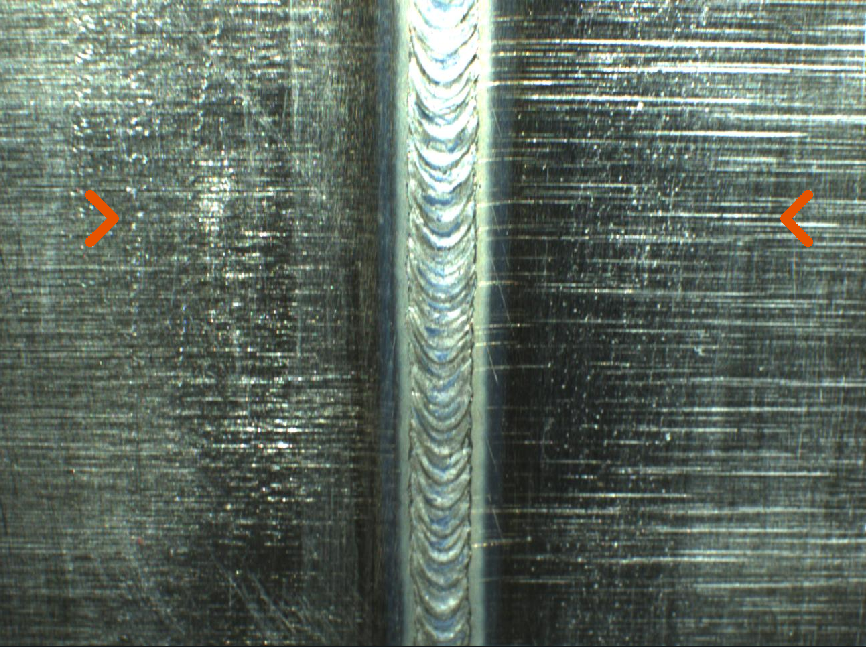Ingenious Approaches to Fillet Weld Examination and Testing: Enhancing Weld High Quality and Conformity Requirements
In the realm of welding, the high quality and stability of fillet welds play an important role in ensuring the architectural stability and dependability of different industrial parts. With the consistent drive for enhanced effectiveness and conformity with stringent standards, the expedition of ingenious strategies to fillet weld inspection and testing has ended up being essential.
Advanced Non-Destructive Testing Methods
Utilizing modern modern technologies, advanced non-destructive testing methods play a critical role in making certain the integrity and top quality of fillet welds. These approaches, such as phased variety ultrasonic testing (PAUT) and magnetic bit testing (MPT), offer in-depth understandings right into the weld's inner framework without causing any damages to the product. PAUT, for instance, uses several ultrasonic aspects to inspect the weld from different angles, supplying a comprehensive visualization of possible flaws like absence of combination or cracks.
By employing these innovative non-destructive screening techniques, weld assessors can accurately evaluate the high quality of fillet welds, guaranteeing conformity with market standards and policies. The ability to detect problems early on not just improves weld high quality but also avoids costly rework or failures in structural stability, underscoring the value of these ingenious screening strategies in welding inspections.
Robotics and Automation in Examination
The integration of robotics and automation has revolutionized the inspection process for fillet welds, boosting effectiveness and accuracy in quality evaluation. Robotics supply precise control and repeatability in checking welds, guaranteeing reliable and constant outcomes. Automated systems can be programmed to adhere to particular evaluation courses, ensuring detailed insurance coverage of welds and reducing the risk of human error.
Robot assessment systems equipped with innovative sensors can find and measure weld functions with high accuracy, providing in-depth data for analysis. These systems can identify problems such as splits, absence of fusion, and porosity, making it possible for timely restorative activities to be taken. Furthermore, robotics and automation enable real-time information collection and evaluation, providing prompt comments to operators and promoting fast decision-making procedures.
Moreover, making use of robotics and automation in fillet weld examination improves general productivity by decreasing assessment times and boosting inspection throughput. By streamlining the examination process, suppliers can guarantee weld top quality and compliance standards are fulfilled efficiently, inevitably resulting in cost savings and boosted product top quality.
Making Use Of Artificial Intelligence for Evaluation
Man-made knowledge plays a crucial role in boosting the performance and accuracy of evaluation in fillet weld evaluation procedures. By utilizing the power of AI, assessors can improve the evaluation of weld quality and compliance criteria, leading to extra trustworthy and precise outcomes. AI algorithms can rapidly refine substantial quantities of data from weld evaluations, finding flaws or inconsistencies that might be challenging to identify with the nude eye. This sophisticated technology enables real-time surveillance of weld top quality, enabling instant rehabilitative actions to be taken if any problems are spotted.
Moreover, AI systems can pick up from past evaluation information, continuously boosting their ability to identify possible issues and variances in fillet welds. This flexible learning capacity boosts the overall quality control process, reducing the likelihood of human mistake and making sure that welds meet the required criteria. By incorporating fabricated intelligence into fillet weld evaluation, industries can achieve higher degrees of performance, uniformity, and conformity in their examination techniques.
Portable Equipment for On-Site Examination
 Enhancing field assessment effectiveness, the fostering of mobile devices revolutionizes on-site assessment processes for fillet welds. These devices offer flexibility and benefit, permitting assessors to perform extensive assessments in numerous places, consisting of tough or remote settings. Mobile devices such as ultrasonic screening tools, magnetic fragment inspection equipment, and electronic radiography systems offer real-time information and high-resolution imaging home abilities, allowing fast decision-making and prompt comments on weld top quality.
Enhancing field assessment effectiveness, the fostering of mobile devices revolutionizes on-site assessment processes for fillet welds. These devices offer flexibility and benefit, permitting assessors to perform extensive assessments in numerous places, consisting of tough or remote settings. Mobile devices such as ultrasonic screening tools, magnetic fragment inspection equipment, and electronic radiography systems offer real-time information and high-resolution imaging home abilities, allowing fast decision-making and prompt comments on weld top quality.One significant advantage of mobile devices is their capability to enhance inspection treatments, reducing downtime and boosting general efficiency. Inspectors can quickly transport these tools to various job sites, removing the demand for transferring heavy machinery or components to off-site facilities. In addition, the transportability of these devices promotes cost-effectiveness by lessening transport costs and increasing examination timelines.
Furthermore, making use of portable tools for on-site examination promotes aggressive quality assurance measures, as assessors can without delay determine and attend to any potential welding issues or disparities. By incorporating these innovative modern technologies right into on-site assessment methods, welding specialists can make certain conformity with sector standards and improve weld quality, eventually resulting in boosted structural honesty and safety in numerous welding applications.
Combination of Information Management Solution
Having enhanced on-site inspection processes with the utilization of portable devices, the next stage involves the smooth integration of information monitoring systems to even more boost efficiency and information analysis capacities in fillet weld inspection and testing. Welding Inspection Racine. By incorporating data management systems right into the assessment procedure, companies can enhance information collection, storage space, and analysis. This assimilation allows for real-time monitoring of weld high quality, instant recognition of issues, and prompt decision-making to correct any type of problems that might develop throughout the examination procedure
The assimilation of data management systems enables try this site seamless interaction in between different stakeholders involved in the evaluation procedure, fostering cooperation and improving overall quality you could check here control actions. Inevitably, the combination of information management systems offers to elevate the requirements of fillet weld inspection and testing, making certain compliance with sector regulations and improving weld top quality.
Conclusion
In verdict, innovative techniques to fillet weld inspection and testing have actually considerably boosted weld quality and compliance requirements. Advanced non-destructive screening methods, robotics, automation, man-made knowledge, portable tools, and information management systems have reinvented the means weld evaluations are carried out. By making use of these technologies, markets can make certain that welds meet the required high quality requirements and laws, inevitably improving general effectiveness and safety and security in welding processes.

By employing these sophisticated non-destructive screening methods, weld assessors can properly assess the quality of fillet welds, guaranteeing compliance with market criteria and regulations. Portable tools such as ultrasonic testing gadgets, magnetic bit assessment devices, and electronic radiography systems give real-time information and high-resolution imaging capacities, making it possible for fast decision-making and instant comments on weld high quality.
Having enhanced on-site assessment procedures with the application of mobile devices, the following stage entails the smooth combination of information administration systems to better boost performance and information evaluation capabilities in fillet weld assessment and screening (Welding Inspection Racine). Inevitably, the combination of data administration systems serves to elevate the requirements of fillet weld examination and testing, ensuring compliance with industry regulations and improving weld quality
 In conclusion, cutting-edge techniques to fillet weld assessment and testing have actually dramatically improved weld quality and compliance criteria.
In conclusion, cutting-edge techniques to fillet weld assessment and testing have actually dramatically improved weld quality and compliance criteria.